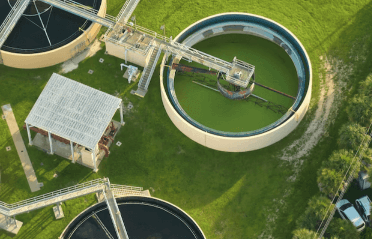Question
a.
Ideal
b.
Real
c.
For both real and ideal
d.
This relation is never true.
Posted under Mass Transfer
Interact with the Community - Share Your Thoughts
Uncertain About the Answer? Seek Clarification Here.
Understand the Explanation? Include it Here.
Q. For what kind of mixtures Dᴀв=Dвᴀ holds?
Similar Questions
Explore Relevant Multiple Choice Questions (MCQs)
Q. In the expression for molar flux Nᴀ=(Nᴀ+Nв)Cᴀ/C – DᴀвdCᴀ/dz, the terms representing bulk flow and molecular diffusion are, respectively
View solution
Q. Consider loss of ethanol vapor by diffusion from a half-filled open test tube. At what point in the diffusion path will the contribution of the bulk flow term to the molar flux be maximum?
View solution
Q. A reaction 3A+2B+C=1.5D+E occurs in a reactor at steady state. What will be the value of the flux ratio Nᴀ/Nᴅ
View solution
Q. For a component A of a mixture, concentration as a function of x is given:
Cᴀ=5e⁻¹⁰ˣ (x is in cm and Cᴀ in mol/liter)
Calculate the value of diffusion velocity (m/s) of the component A at the point x=0, if diffusivity of A in the mixture is 2.567*10⁻⁵m²/s.
View solution
Q. A sheet of Fe 1.0 mm thick is exposed to an oxidizing gas on one side and a deoxidizing gas on the other at 725°C. After reaching steady state, the Fe membrane is exposed to room temperature, and the C concentrations at each side of the membrane are 0.012 and 0.075 wt%. Calculate the diffusion coefficient (m²/sec) if the diffusion flux is 1.4×10⁻⁸kg/m²-sec.
View solution
Q. At which condition molar flux with respect to a stationary observer and with respect to an observer moving with molar average velocity?
View solution
Q. Which among the following is the statement of the ‘Fick’s Law’?
View solution
Q. The gas A diffuses through non-diffusing B from point 1 to point 2. The total pressure is 2atm and yᴀ₁=0.1 and yᴀ₂=0.Then the ratio (dPᴀ/dz)1/(dPᴀ/dz)2 is
View solution
Q. In industries titanium is hardened through diffusion of carbon. The concentration of carbon at 1mm into the surface of the titanium slab is 0.25kg/m³ and at 3mm the concentration is 0.68kg/m³. The rate at which the carbon is entering into its surface is 1.27*10⁻⁹kg/m².s. Calculate the value of diffusion coefficient of carbon.
View solution
Q. The mass transfer by convection can take place under how many conditions?
View solution
Q. Lewis number is given by
View solution
Q. Prandtl number is given by
View solution
Q. Schmidt number is given by
View solution
Q. Sherwood number is given by
View solution
Q. The solution for velocity, concentration and temperature boundary layers will be same if
View solution
Q. Convective mass transfer involves the transportation of material between a boundary surface and a moving fluid or between two immiscible fluids. It is prescribed by the relation
View solution
Q. Which number forms the connecting link between the velocity and temperature profiles?
View solution
Q. Which number forms the connecting link between the velocity and concentration profiles?
View solution
Q. Which number forms the connecting link between the temperature and concentration profiles?
View solution
Q. What is the value of emissivity for polished aluminum?
View solution
Recommended Subjects
Are you eager to expand your knowledge beyond Mass Transfer? We've handpicked a range of related categories that you might find intriguing.
Click on the categories below to discover a wealth of MCQs and enrich your understanding of various subjects. Happy exploring!








